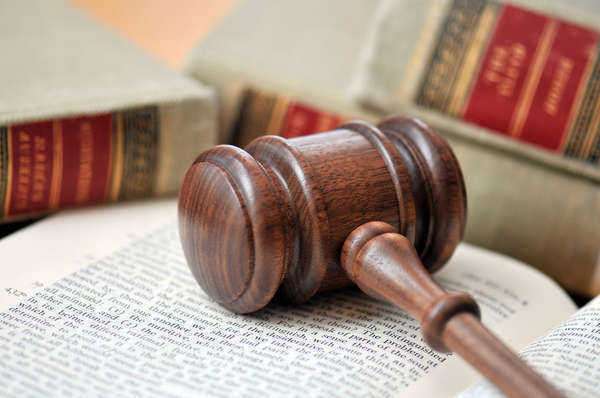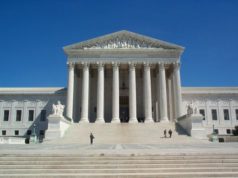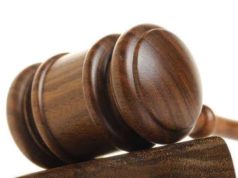Table of Contents

Understanding the Supreme Court Veto and its Relationship to Other Veto Powers
The Supreme Court of the United States is the highest court in the land, with the power to hear and decide on cases that hold significant constitutional or legal implications. As such, it is often referred to as the “court of last resort,” since its decisions are considered binding and have far-reaching effects on the governance of the country. One of the unique powers of the Supreme Court that sets it apart from other courts is the ability to veto certain actions taken by the other branches of government, including the executive and legislative branches. This article seeks to examine the nature of the Supreme Court veto and its relationship to other veto powers, as well as to explore some of the most notable decisions that the Supreme Court veto has made throughout the history of the United States.
What is the Supreme Court Veto?
To understand the Supreme Court veto, it is first necessary to understand what is meant by the term “veto.” Generally speaking, a veto is a term used to describe the power of one branch of government to block or cancel actions taken by another branch. In the case of the United States, the Constitution provides for several different types of veto powers, each of which serves a distinct purpose.
Perhaps the most well-known veto power is that held by the President, known as the presidential veto. This power allows the President to reject legislation passed by Congress, effectively blocking it from becoming law. The presidential veto is considered a check on the power of the legislative branch, ensuring that Congress is unable to simply pass whatever bills it chooses without regard for the opinions of the President.
The Supreme Court veto, on the other hand, is a power that is much less commonly heard of. This power is not explicitly stated in the Constitution, but rather has been inferred from the Court’s ability to hear cases that involve the actions of the other branches of government. Essentially, the Supreme Court has the power to nullify actions that are deemed unconstitutional, meaning that they violate the basic principles laid out in the Constitution, whether by Congress or the President.
The Supreme Court veto is therefore a tool that the Court can use to limit the power of both the legislative and executive branches of government. While other veto powers are explicitly mentioned in the Constitution, the Supreme Court veto is derived from the Court’s broader role of interpreting the Constitution and ensuring that the other branches of government abide by its provisions.
Relationship to Other Veto Powers
Although the Supreme Court veto is distinct from other veto powers in some ways, it is also closely related to other veto powers that are defined within the Constitution. For example, as mentioned earlier, the presidential veto is another type of veto power that is intended to act as a check on the power of the legislative branch. Similarly, the Supreme Court veto is intended to act as a check on the other branches of government, ensuring that they do not overstep their bounds or violate the Constitution.
Another type of veto power that is closely related to the Supreme Court veto is the power of judicial review. This power allows the Court to review and potentially overturn decisions made by lower courts, or to declare laws and executive actions unconstitutional. Judicial review is a fundamental aspect of the U.S. legal system, and has been enshrined in the Constitution since the landmark case Marbury v. Madison, in which Chief Justice John Marshall famously wrote that “it is emphatically the province and duty of the judicial department to say what the law is.”
The Supreme Court veto can be seen as an extension of the power of judicial review. While judicial review allows the Court to strike down laws and actions that violate the Constitution, the Supreme Court veto allows the Court to go a step further and actually prevent the other branches of government from taking certain actions in the first place. Though these powers differ in their scope and mechanism, they are both essential tools that the Supreme Court can use to ensure that the other branches of government do not overstep their bounds.
Notable Decisions Involving the Supreme Court Veto
Over the course of its history, the Supreme Court has made numerous decisions involving its power to veto the actions of the other branches of government. Some of the most notable decisions in this category are outlined below.
- Marbury v. Madison (1803) – This landmark case established the power of judicial review and laid the groundwork for the Supreme Court veto. In this case, Chief Justice John Marshall declared that a law passed by Congress was unconstitutional, and that the Supreme Court had the power to strike it down. This decision helped to establish the Court’s role as a co-equal branch of government, and helped to ensure that the other branches of government would be held accountable to the principles laid out in the Constitution.
- United States v. Nixon (1974) – In this case, the Supreme Court ruled that President Richard Nixon could not use executive privilege to block the release of tapes and documents related to the Watergate scandal. The Court held that even the President was not above the law, and that executive privilege could not be used to shield the President from criminal investigation. This decision was seen as a landmark victory for the rule of law, and helped to reinforce the idea that the Supreme Court had the power to check the actions of the executive branch.
- Board of Education of Oklahoma City Public Schools v. Dowell (1991) – This case involved the Supreme Court vetoing a lower court’s desegregation order in Oklahoma City. The Supreme Court held that the district court’s order had been in place for too long, and that it was time to lift the order and allow the school district to move on. While this decision may have been controversial at the time, it was seen as an example of the Supreme Court exercising its power to ensure that lower courts did not overstep their bounds or violate the Constitution.
- National Federation of Independent Business v. Sebelius (2012) – In this case, the Supreme Court upheld the constitutionality of the Affordable Care Act, also known as Obamacare. The Court held that the individual mandate, which required Americans to purchase health insurance or face a tax penalty, was constitutional under Congress’s power to tax. However, the Court also struck down a provision of the law that would have penalized states that refused to expand Medicaid. This decision was seen as a significant victory for the Obama administration, and highlighted the Supreme Court’s role as the final arbiter of the Constitutionality of laws passed by Congress.
Conclusion
The Supreme Court veto is a powerful tool that allows the Court to check the actions of the other branches of government and ensure that they don’t violate the Constitution. While not explicitly mentioned in the Constitution, this power has been derived from the Court’s ability to interpret the Constitution and rule on the Constitutionality of laws and actions taken by the other branches. By exercising this power, the Supreme Court has helped to shape the course of American history and ensure that the principles laid out in the Constitution are upheld. While the power of the Supreme Court veto is not absolute, it remains a critical tool that the Court can use to ensure that the other branches of government operate within the bounds of the law and the Constitution.
Veto, defined as deciding against something or refusal to support, is that which is under the authority of the President. In general, veto power emits authority to halt something from occurring, but does not institute any changes itself. Despite its lack of actual statement within the Constitution, veto is inferred within Article I, Section 7 of the United States Constitution.
That which is specified within the Constitution is composed of the requirement of all legislation stemming from Congress to have been conveyed to the President prior to its passing. In such a way, the President may either sign legislation for approval into law or return the bill unsigned to Congress, thus, vetoing it.
There are various consequences that accompany such an authority as veto power, which may be summed up by two contrasting outcomes. On one side, if the President does threaten or hint at a possible vetoing of
legislation, they may adequately influence the legislature toward some modification that would better suit their desired direction. Amendments may be passed, which may work to this end. However, the use of veto power must also not be used at the President’s leisure, as such an abuse of authority may lead to conflict arising in terms of the relationship between that of the Commander in Chief and Congress. This may only lead to distrust as well indignation within the political sphere, which may then make the President’s job that much
more difficult. They may also be seen with increased scrutiny that would possibly hurt their chances of sustaining office in the future.
The procedure that occurs when legislation is presented to the President for authorization also resides within the United States Constitution. It sets forth that the Commander in Chief has a time period consisting of 10 days to mull over particular legislation. During this time, they may either place their signature on the Bill, thus making it law, or veto it by doing nothing at all and sending it back. Such a veto is not set in stone, however, as Congress may override the President’s decision by a two-thirds vote. This counteraction may be prevented by what is known as a “pocket veto.”
In accordance with such a term, the President may do away with any potential for Congress to supersede it. If the president holds onto the Bill with no other action employed while Congress has already adjourned, there can be no possibility of “Congressional override.” In the event of such a circumstance, a new Bill must be created, introduced, and conveyed through the whole process of legislation once more.
In the Supreme Court case of Immigration and Naturalization Service v. Chadha, it was ruled that legislative vetoes not be permitted concerning issues of immigration as well as naturalization. These were due to the Court’s belief that such provisions were in direct violation with the Constitutional “separation of powers” that must exist and be
maintained between that of the executive and legislative areas.


























